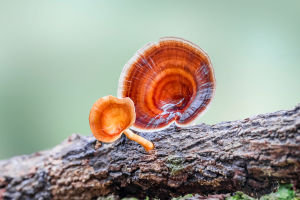Ever noticed how some indoor plants thrive in your home while others barely survive?
Often, the difference comes down to lighting. Indoor plants rely on light to photosynthesize, and the wrong type or intensity of light can stunt growth.
LED lighting has become a game-changer, offering an energy-efficient, customizable solution to help plants flourish indoors. Whether it's a small desk plant or a larger indoor garden, the right LED setup can make all the difference.
Many plant enthusiasts report that once they switched to LED lights, their plants grew faster, produced more leaves, and even developed richer colors.
Why LED Lighting Works
LED lights provide a spectrum of light similar to sunlight, essential for photosynthesis. Unlike traditional bulbs, LEDs produce little heat and can be placed close to plants without burning them. They can be tuned to emit specific colors, such as blue and red, which are most important for plant growth—blue for leafy growth and red for flowering and fruiting.
This targeted approach ensures that plants receive exactly the wavelengths they need, improving energy efficiency and reducing wasted light.
Choosing the Right Spectrum
1. Full-spectrum LEDs: These mimic natural sunlight and are ideal for a variety of plants.
2. Blue light-focused LEDs: Best for leafy greens and indoor foliage, promoting strong, compact growth.
3. Red light-focused LEDs: Stimulate flowering, fruiting, and root development in flowering plants.
Combining blue and red LEDs in the right ratio can maximize photosynthesis and ensure healthier, more vibrant plants. For beginners, starting with full-spectrum LEDs is a safe choice, while advanced growers may fine-tune colors for specific plant stages.
Positioning and Distance
Where you place your LED lights matters.
Too close, and some plants may experience leaf burn; too far, and they may stretch and grow weak. Generally, 12–24 inches above small to medium plants works well, but this varies depending on light intensity and plant type. Adjustable fixtures can help you tailor the setup as your plants grow. Rotating plants occasionally also ensures even light exposure for all leaves, preventing uneven growth.
Duration and Timing
Plants also need a cycle of light and darkness, mimicking natural day and night. Most indoor plants thrive with 12–16 hours of light daily. Using timers ensures consistency, prevents overexposure, and helps regulate plant hormones for optimal growth and flowering. Some growers even experiment with gradual dawn and dusk effects, slowly increasing or dimming light to simulate natural transitions.
Benefits Beyond Growth
LED optimization isn't just about healthier leaves or more flowers—it also improves energy efficiency. LEDs consume significantly less electricity than traditional grow lights, generating cost savings over time. Plus, they last longer, reducing maintenance and replacement needs. The cool operation of LEDs also protects nearby furnishings and prevents heat stress for plants. Over time, well-lit plants can improve indoor air quality and boost mood, making your home feel more vibrant and alive.
6. Practical Tips for Indoor Setups
Assess plant needs: Not all plants require the same intensity or spectrum; leafy plants and flowering plants differ.
Adjust as plants grow: Move lights higher or lower depending on plant height and growth stage.
Monitor plant response: Yellowing leaves or excessive stretching may indicate insufficient light, while scorched tips suggest too much intensity.
The Future of LED Plant Lighting
Emerging technologies are making LED systems smarter and more automated. Some LEDs now integrate with sensors to adjust intensity based on ambient light and plant health. Smart systems can even create custom lighting cycles, ensuring each plant receives optimal care without constant monitoring.
Combining LEDs with hydroponic or aeroponic setups can further enhance growth, allowing urban gardeners to maintain lush greenery even in small apartments.
Optimizing LED lighting for indoor plants combines science and art. By understanding spectrum, positioning, and duration, you can turn any indoor space into a thriving green oasis. With the right setup, your plants will reward you with stronger growth, vibrant leaves, and abundant blooms—all while saving energy, reducing maintenance, and creating a more pleasant indoor environment.


